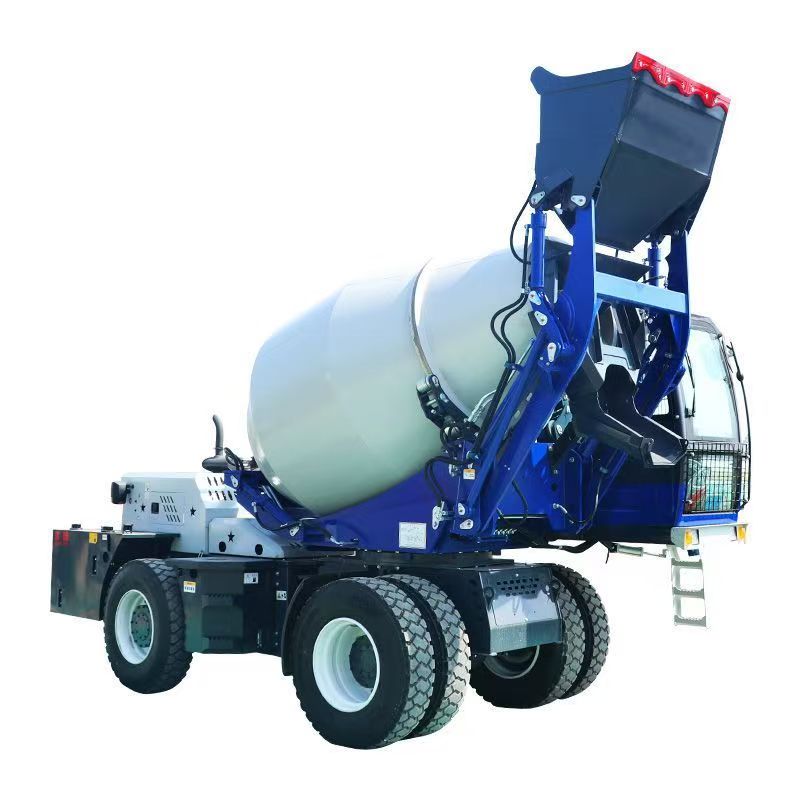As a key equipment in the construction industry, concrete mixers have a wide range of uses and strong pertinence, which are specifically reflected in the following aspects:

In various construction scenarios, it is the core equipment for concrete preparation. In housing construction projects, whether it is low-rise residential buildings or high-rise buildings, from foundation pouring to wall and floor construction, concrete mixers are required to provide concrete that meets the requirements of strength and workability to ensure the stability of the building structure. In bridge construction, in view of the special requirements for concrete in different parts such as bridge piers and bridge decks, such as high strength and impermeability, the mixer ensures that the concrete performance meets the standards through precise mixing, laying a foundation for the bearing capacity and durability of the bridge. When paving roads, it can mix concrete suitable for road surface pouring, meeting the requirements of roads for flatness and pressure resistance, and helping to build solid and durable traffic arteries. In water conservancy projects, such as dams, channels and other projects, the concrete provided by concrete mixers needs to have good anti-scouring and anti-seepage performance to cope with complex hydrological environments.
From the perspective of concrete type adaptation, different types of mixers correspond to different uses. The gravity-type mixer is good at mixing plastic concrete, which has good fluidity and is often used in scenarios that require pumping or large pouring areas, such as large floor pouring and basement floor construction. The forced mixer focuses on mixing dry-hard concrete, lightweight aggregate concrete, etc. Dry-hard concrete has high strength and small shrinkage, and is suitable for prefabricated component production, road repair, etc.; lightweight aggregate concrete is light in weight and has good thermal insulation performance, which plays an important role in the construction of lightweight walls and roof insulation layers. The efficient mixing of the forced mixer can ensure the uniform distribution of its aggregates and stable performance.
In addition, concrete mixers can also cooperate with other equipment to form a production line, improving construction efficiency. In large concrete mixing stations, it works in coordination with batching machines, conveyor belts, cement silos and other equipment to realize automatic metering, conveying and mixing of raw materials, and mass production of concrete to meet the needs of continuous construction of large-scale projects. The mobile mixer is suitable for small and medium-sized, scattered construction scenarios, such as rural house building, municipal maintenance (such as road pothole repair, sewer reconstruction), etc. Its flexible movement feature can provide concrete for different operation points at any time, reducing material transportation costs and time.
Concrete mixers for special purposes can specifically meet the needs of specific projects. The asphalt concrete mixer is equipped with a heating and heat preservation device, which can maintain the appropriate temperature of asphalt during the mixing process, ensure the cohesiveness and stability of asphalt concrete, and is specially used for pavement laying and maintenance of highways and expressways. The lightweight concrete mixer, through a special mixing design, reduces the damage of lightweight aggregates such as ceramsite and expanded perlite during mixing, ensures the density and strength of lightweight concrete, and provides qualified raw materials for the production of lightweight wall materials and the construction of building insulation layers.
In short, through flexibly adapting to different construction needs and concrete types, concrete mixers have become indispensable key equipment in modern construction projects from foundation to main body, from small repairs to large-scale projects, directly related to the project quality and the smooth progress of the construction schedule.





